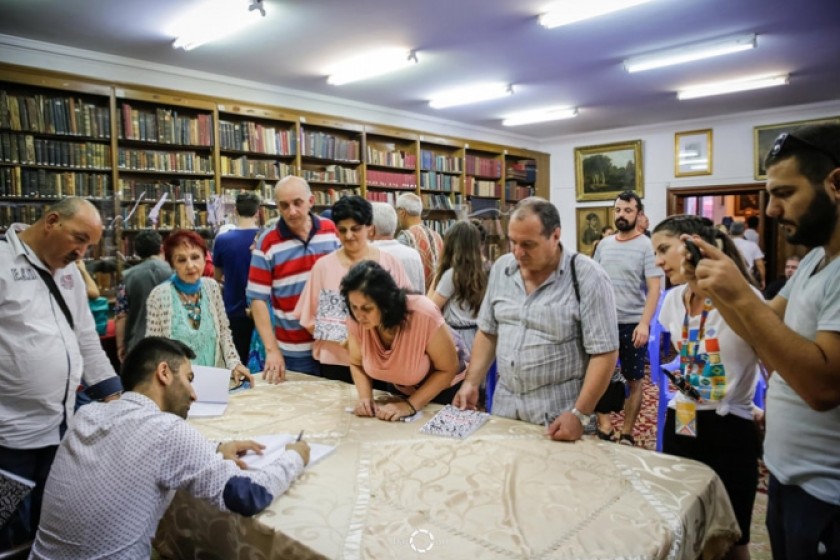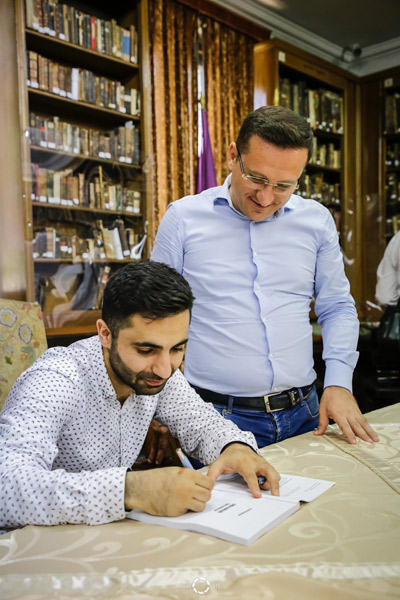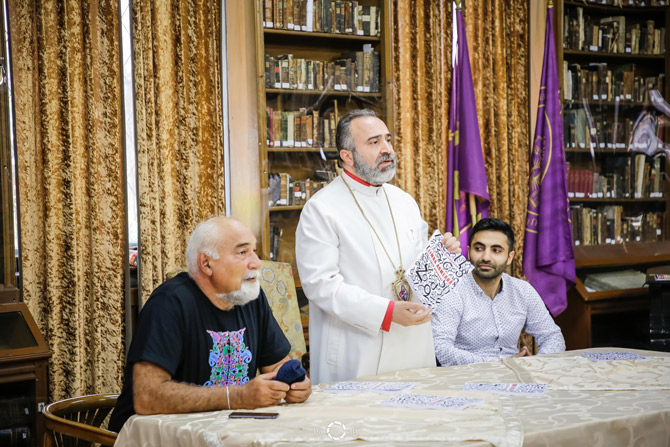
Diaspora Researcher Publishes Self-Help Book to Help Romanians Learn Armenian
1,000 Armenians live in Romania, and Arsen Arzumanyan has come up with what he believes is a new way to teach Armenian to the 90% who don’t speak the language.
Arsen Arzumanyan, a specialist in international studies and a diaspora researcher, who moved to Romania seven years ago, prefers provoking an interest towards the language rather than blaming people for not speaking it.
Recently, Arsen presented his book, "Learning Armenian Without a Teacher", at the Armenian Street Festival in Bucharest. All the first copies of the book, in Romanian, were bought on the first day. Arsen says he plans to have 2,000 copies printed.
1000-year-old Armenian community

The Armenian community in Romania is one of the oldest in diaspora. Arsen says it has more than 1,000 years of history, with the first Armenians coming from Ani, the medieval capital of Armenia.
According to 2011 data(the latest statistics for now), there are 1,361 Armenians in Romania. Arsen says the real number is actually larger, as his study reveals.The “level” of keeping the Armenian identity is quite different, though, regardless of the official percentage of Armenian roots.
The diaspora researcher says it’s understandable that most of the members of the Armenian community do not speak Armenian. Romania lived through 40 years of Communist rule, when the Armenian school was closed. Today, there are around twenty Armenian churches and monasteries in Romania, some dating back to the 14th century.
Learning Armenian in Romania without a teacher
"I think, the language equates to ethnicity. It’s impossible to maintain Armenian roots in this country without keeping the connection with Armenia, which cannot be done without the knowledge of the language. That is why I prepared this self-help book,” says Arsen.
He came up with the idea five years ago, when he was asked to help somebody learn Armenian.

At the same time, Arsen started teaching Armenian in some Armenian communities. He wanted to use a new method to present the language, since he believed that the classical methods of teaching Armenian were mostly not working. Arsen thought the most accurate method of teaching was via phonetic transliteration, and he used the format in his book. The grammar of the Armenian language is presented in Romanian, with a number of similarities and differences between Romanian and Armenian, adding Armenian letters and words to each class.

Arsen compares this method to pre-school age instruction, when children speak the language but can neither read nor write.
The book was published by the Ararat Publishing House in Romania, fully funded by the Romanian state budget.
Armenian traces in Romania
Arsen is now working on a second book, which is about the traces of Armenian culture in Romania. He has visited most of the 200 settlements that bear Armenian traces.
"If this work was done fifty years ago, it would have been a thousand times more effective, with more information," says Arsen.
The book will probably be published next spring, in two languages - Armenian and Romanian.
 Videos
Videos Photos
Photos




Write a comment